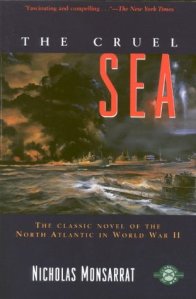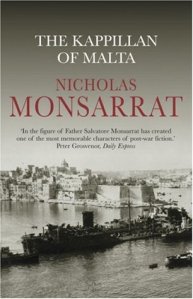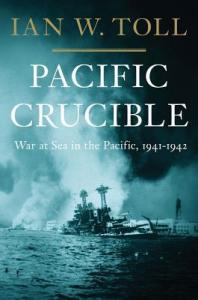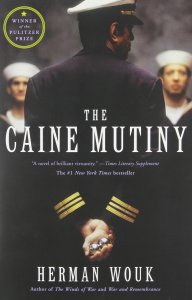This month’s wish-list is a powerful one in my opinion. We will never forget the sacrifices our military made and still makes so we might be saved from oppression and for many other reasons. War is ugly, brutal and often times heatless one…Needless to say, it also saves lives and governments from falling into the wrong hands.
This list involves war at sea and this collection of books is one I want to have for my library. Be sure to check out other wish-list from my fellow book bloggers below!
**************
 The Cruel Sea by Nicholas Monsarrat
The Cruel Sea by Nicholas Monsarrat
A powerful novel of the North Atlantic in World War II, this is the story of the British ships Compass Rose and Saltash and of their desparate cat-and-mouse game with Nazi U-boats. First published to great accalim in 1951, The Cruel Sea remains a classic novel of endurance and daring
 The Battle of the Atlantic: How the Allies Won the War by Jonathan Dimbleby
The Battle of the Atlantic: How the Allies Won the War by Jonathan Dimbleby
“The only thing that ever really frightened me during the war was the U-boat peril,” wrote Winston Churchill in his monumental history of World War Two. Churchill’s fears were well-placed-the casualty rate in the Atlantic was higher than in any other theater of the entire war. The enemy was always and constantly there and waiting, lying just over the horizon or lurking beneath the waves. In many ways, the Atlantic shipping lanes, where U-boats preyed on American ships, were the true front of the war.
England’s very survival depended on assistance from the United States, much of which was transported across the ocean by boat. The shipping lanes thus became the main target of German naval operations between 1940 and 1945. The Battle of the Atlantic and the men who fought it were therefore crucial to both sides. Had Germany succeeded in cutting off the supply of American ships, England might not have held out. Yet had Churchill siphoned reinforcements to the naval effort earlier, thousands of lives might have been preserved. The battle consisted of not one but hundreds of battles, ranging from hours to days in duration, and forcing both sides into constant innovation and nightmarish second-guessing, trying desperately to gain the advantage of every encounter. Any changes to the events of this series of battles, and the outcome of the war-as well as the future of Europe and the world-would have been dramatically different.
Jonathan Dimbleby’s, The Battle of the Atlantic offers a detailed and immersive account of this campaign, placing it within the context of the war as a whole. Dimbleby delves into the politics on both sides of the Atlantic, revealing the role of Bletchley Park and the complex and dynamic relationship between America and England. He uses contemporary diaries and letters from leaders and sailors to chilling effect, evoking the lives and experiences of those who fought the longest battle of World War Two. This is the definitive account of the Battle of the Atlantic.
 The Kappillan of Malta by Nicholas Monsarrat
The Kappillan of Malta by Nicholas Monsarrat
As bombs pound Malta to dust, Father Salvatore–a simple priest, or kappillan, serving the poor–finds himself caught in the drama of World War Two. In the fragile safety of catacombs revealed by the explosions, he tends to the flood of homeless, starving, and frightened people seeking shelter, giving messages of inspiration and hope. His story, and that of the island, unfold in superbly graphic images of six days during the siege.
The Fleet at Flood Tide: America at Total War in the Pacific, 1944-1945 by James D. Hornfischer
The extraordinary story of the World War II air, land, and sea campaign that brought the U.S. Navy to the apex of its strength and marked the rise of the United States as a global superpower
One of America s preeminent military historians, James D. Hornfischer has written his most expansive and ambitious book to date. Drawing on new primary sources and personal accounts by Americans and Japanese alike, here is a thrilling narrative of the climactic end stage of the Pacific War, focusing on the U.S. invasion of the Mariana Islands in June 1944 and the momentous events that it triggered.
With its thunderous assault into Japan s inner defensive perimeter, America crossed the threshold of total war. From the seaborne invasion of Saipan to the stunning aerial battles of the Great Marianas Turkey Shoot, to the largest banzai attack of the war and the strategic bombing effort that led to Hiroshima and Nagasaki, the Marianas became the fulcrum of the drive to compel Tokyo to surrender with consequences that forever changed modern war.
These unprecedented operations saw the first large-scale use of Navy Underwater Demolition Teams; a revolution in the fleet s ability to sustain cross-hemispheric expeditionary warfare; the struggle of American troops facing not only a suicidal enemy garrison but desperate Japanese civilians; and the rise of the U.S. Navy as the greatest of grand fleets. From the Marianas, B-29 Superfortresses would finally unleash nuclear fire on an enemy resolved to fight to the end.
Hornfischer casts this clash of nations and cultures with cinematic scope and penetrating insight, focusing closely on the people who rose to the challenge under fire: Raymond Spruance, the brilliant, coolly calculating commander of the Fifth Fleet; Kelly Turner, whose amphibious forces delivered Marine General Holland Howlin Mad Smith s troops to the beaches of Saipan and Tinian; Draper Kauffman, founder of the Navy unit that predated today s SEALs; Paul Tibbets, who created history s first atomic striking force and flew the Enola Gay to Hiroshima; and Japanese warriors and civilians who saw the specter of defeat as the ultimate test of the spirit.
From the seas of the Central Pacific to the shores of Japan itself, The Fleet at Flood Tide is a stirring and deeply humane account of World War II s world-changing finale. Advance praise for The Fleet at Flood Tide
This is a masterful account of the barbaric last year of the Pacific War, combining original scholarship, engaging prose, excellent historical judgment, and empathy for the soldier, to explain why defeating the Japanese proved so costly and how American military forces performed so effectively and, in the end, humanely. The Fleet at Flood Tide is, quite simply, popular and scholarly military history at its best. Victor Davis Hanson, author of Carnage and Culture, senior fellow in classics and military history, The Hoover Institution, Stanford University
We have here a carefully researched and well-written account of key stages and events in the final portion of the war in the Pacific that includes a careful look at the Japanese side as well as the American. The campaign in the Marianas and the background and reality of the atomic bomb are exceptionally thoughtfully presented. Gerhard L. Weinberg, author of A World at Arms: A Global History of World War II, professor emeritus of history, University of North Carolina”
 Pacific Crucible: War at Sea in the Pacific, 1941-1942 (The Pacific War Series #1) by Ian W. Toll
Pacific Crucible: War at Sea in the Pacific, 1941-1942 (The Pacific War Series #1) by Ian W. Toll
On the first Sunday in December 1941, an armada of Japanese warplanes appeared suddenly over Pearl Harbor, Hawaii, and devastated the U.S. Pacific Fleet. Six months later, in a sea fight north of the tiny atoll of Midway, four Japanese aircraft carriers were sent into the abyss. Pacific Crucible tells the epic tale of these first searing months of the Pacific war, when the U.S. Navy shook off the worst defeat in American military history and seized the strategic initiative.
Ian W. Toll’s dramatic narrative encompasses both the high command and the “sailor’s-eye” view from the lower deck. Relying predominantly on eyewitness accounts and primary sources, Pacific Crucible also spotlights recent scholarship that has revised our understanding of the conflict, including the Japanese decision to provoke a war that few in the country’s highest circles thought they could win. The result is a page-turning history that does justice to the breadth and depth of a tremendous subject.
 The Caine Mutiny by
The Caine Mutiny by
The Novel that Inspired the Now-Classic Film, The Caine Mutiny and the Hit Broadway Play, The Caine Mutiny Court-Martial Herman Wouk’s boldly dramatic, brilliantly entertaining novel of life-and mutiny-on a Navy warship in the Pacific theater was immediately embraced, upon its original publication in 1951, as one of the first serious works of American fiction to grapple with the moral complexities and the human consequences of World War II. In the intervening half century, The Caine Mutiny has become a perennial favorite of readers young and old, has sold millions of copies throughout the world, and has achieved the status of a modern classic.
Here are the wish lists from a few of my friends this month:
Erin @ Flashlight Commentary
Colleen @ A Literary Vacation
Heather @ The Maiden’s Court
Magdalena @ A Bookaholic Swede
Holly @ 2 Kids and Tired

Great Wish List, Stephanie. Yes, lest we forget – and hopefully will never have to endure again. Alas, humans don’t seem to learn from bitter history.
LikeLiked by 1 person
Thank you, Inge! I completely agree…
LikeLike
Reblogged this on Elisabeth Marrion.
LikeLiked by 1 person